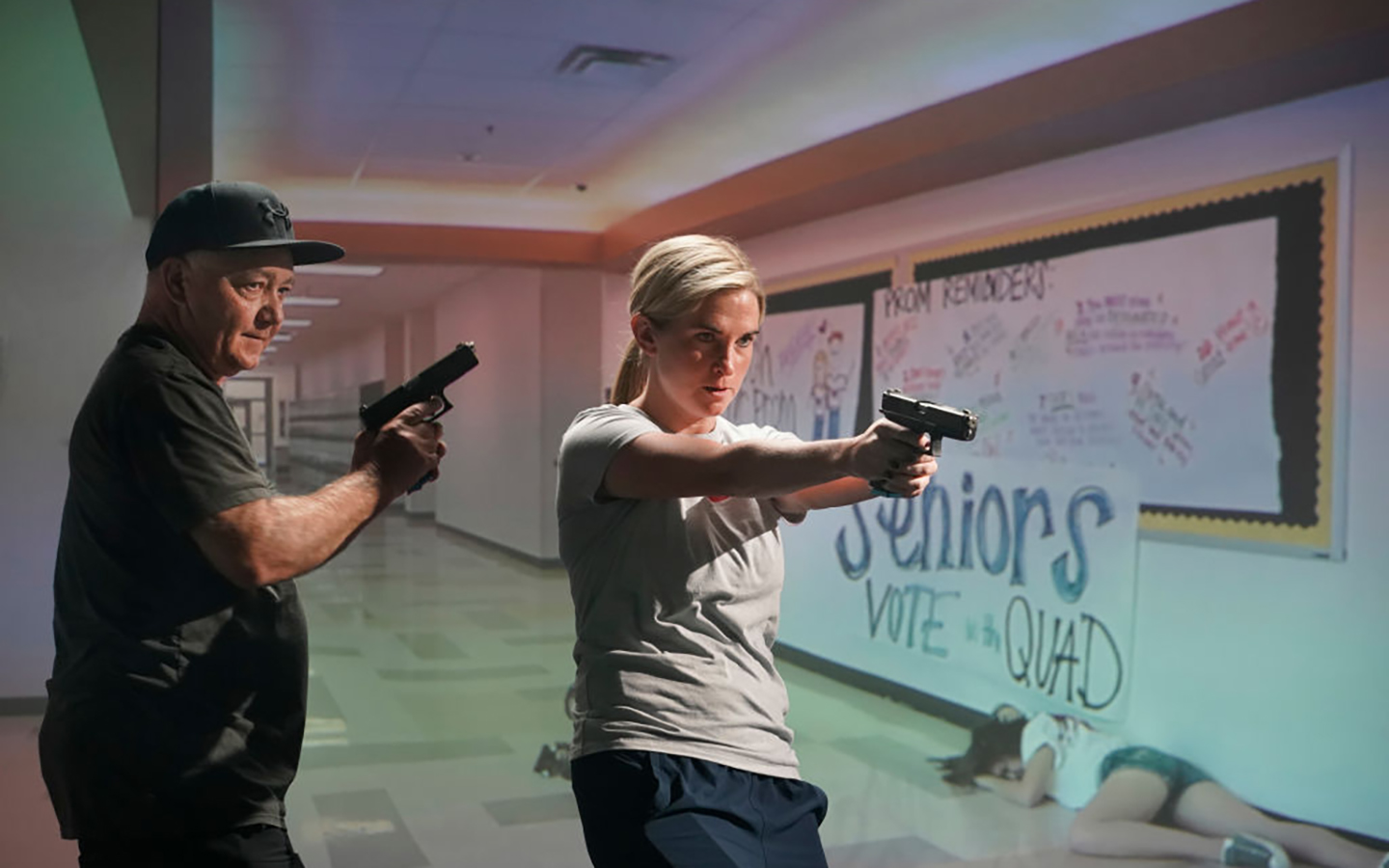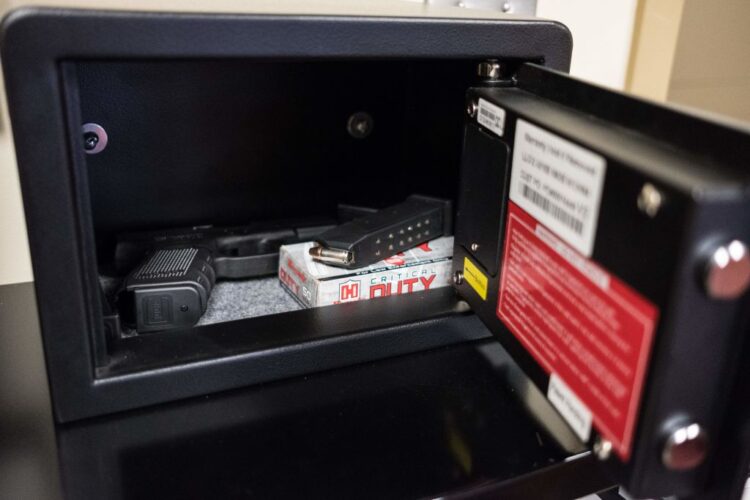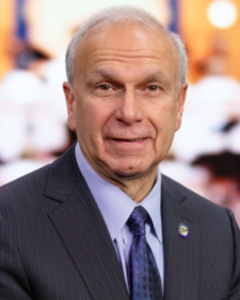Ohio Teachers May Soon Carry Guns. Among Experts’ Safety Concerns: Racial Bias
A similar Florida law mandates 12 hours of diversity training before firearm approval. But Ohio lawmakers say they didn’t consider bias ‘whatsoever’

Updated, June 13
With Ohio passing legislation that will make it easier for teachers to carry guns in school, educators and youth are sounding the alarm that the bill could make classrooms less safe — particularly for Black and Hispanic students.
“I have no doubt in my mind, it increases the likelihood of school violence,” said Julie Holderbaum, a high school English teacher in Minerva, Ohio. “I have no doubt it would lead to more tragedies.”
The law could raise the stakes on disciplinary policies that already target youth of color at rates disproportionate to white students, said Deborah Temkin, a school safety expert at Child Trends.
“There is very much a possibility for disproportionate use of force in the event that the decision to use a gun has to be made,” she told The 74. “Making a decision in a split second relies inherently on your biases.”
Gov. Mike DeWine signed the bill into law June 13. It does not require districts to arm teachers, but gives school boards the option to do so while slashing the required training hours from over 700 to 24.
Ohio joins at least nine other states in explicitly allowing non-security school personnel to carry firearms on school grounds, according to the National Conference of State Legislatures. Some of those states set no minimum training requirement for armed teachers, but of those that do, Ohio ties Wyoming for the lowest requirement at 24 total hours. Florida, where in 2017 a teen gunman at Marjory Stoneman Douglas High School killed 17 students and staff, requires the most initial training, at 144 hours.
The Florida law also mandates that armed teachers must first undergo at least 12 hours of diversity training, a nod to the possibility that educators carrying weapons could be prone to racial bias.
Ohio’s bill includes no such requirement.
In the legislation’s committee hearings, constituents submitted over 380 written comments; 360 opposed the measure while just 20 favored it. Among the voices urging lawmakers to reject the bill was Kavita Parikh, co-founder of Students Demand Action Toledo. She emphasized that it could harm Black, Hispanic, Indigenous and Asian-American students.
“Arming teachers could lead to a negative culture of fear for students, especially students of color. As students of color are disproportionately disciplined, the notion of arming teachers has also been connected to decreasing high school graduation and college enrollment for these students,” she wrote.
‘You don’t pick threats based upon color’
Nationwide, GOP efforts to “harden” schools in response to the May 24 shooting at Robb Elementary in Uvalde, Texas, have reignited debates over the negative impact of disciplinary policies and school security staff on students of color. Even in preschool, a disproportionate share of Black students face suspensions, starting a chain of events known as the school-to-prison pipeline that increases their risk of entering the juvenile justice system later in life.
Several state legislators who backed the Ohio bill told The 74 either they do not believe racial disparities to be a possible outcome of arming teachers or that they did not consider the issue in the first place.
“It’s not anything that I’ve thought about whatsoever,” state Rep. Tom Young, who co-sponsored the bill. Like Young, the overwhelming majority of GOP legislators who backed the bill are white.
“No matter who, a threat is a threat. … You don’t pick threats based upon color,” he said.
Ohio, however, is the site of at least two police killings infamous for alleged racial bias. White officers shot and killed 12-year-old Tamir Rice in 2014 and 13-year-old Tyre King in 2016, both Black boys who were holding toy guns.
At the time, DeWine, then attorney general, called for an overhaul of police training on how to correctly identify an active shooter.
Now as governor, his support for the new measure rolls back the preparation required for teachers to arm themselves on campus and respond to threats.
“My office worked with the General Assembly to remove hundreds of hours of curriculum irrelevant to school safety and to ensure training requirements were specific to a school environment and contained significant scenario-based training. House Bill 99 accomplishes these goals, and I thank the General Assembly for passing this bill to protect Ohio children and teachers,” DeWine said in a statement to The 74.
The specified 24 hours of training are “ideal” for school staff, said DeWine’s Press Secretary Dan Tierney. He did not comment on whether the omission of anti-bias requirements was an oversight, nor on what changed the governor’s mind since calling for increased police training in 2014.

The legislation comes after a June 2021 Ohio Supreme Court decision interpreted an already existing state law on arming teachers to mean school staff were required first to complete over 700 hours of training before carrying guns. While the new bill drops that number to 24, school districts can set a higher bar if they choose. Districts that adopt the policies will have to inform community members that an adult on campus is armed.
Among those opposed to the bill are the Ohio Federation of Teachers, the Fraternal Order of Police of Ohio and numerous other groups.
The state did not have any known incidents of gun misuse, nor of teachers unfairly targeting students of color before the 2021 court ruling, Rep. Thomas Hall, the bill’s sponsor, pointed out in a message to The 74.
‘Almost instant accessibility’
With a concealed carry law having gone into effect statewide June 13, teachers in districts that allow them to be armed could come to school with their gun tucked into a pocket, waistband or holster.
“What we don’t want, in my personal opinion, is for [teachers] to have to run down the hall to a locker and grab a weapon. That kind of defeats the purpose. … I would want to have [guns] in the classroom, if it’s the case of a teacher, so that they have access if somebody were to attack an individual classroom,” state Sen. Jerry Cirino, a co-sponsor of the bill, told The 74.
“We’re going to have to find the right methods so that we have almost instant accessibility, because that’s how [school shootings] happen,” he continued, “but also not make it possible for a weapon to be grabbed by the wrong person in school, even accidentally.”
Firearms getting into the wrong hands is a concern held by many of the bill’s opponents. In other states, guns brought to school by teachers have ended up in the possession of students. In one case, a loaded gun fell out of the waistband of a Florida substitute teacher while he was doing a backflip on the playground.

Districts may adopt their own individual protocols for gun safety and storage under the guidance of a statewide advisory team, explained Hall.
He emphasized that the legislation includes mandated de-escalation training to avoid gun use as a means for resolving issues like school fights.

Cirino, however, said he thinks there could be some circumstances where trained personnel would use firearms not on outside intruders, but on students — including when youth bring knives or guns to school.
When a student is wielding “any weapon that would be capable of threatening somebody’s life or serious injury, I think there could be a justification for an administrator or teacher to use a weapon,” he said.
He expects large buildings to have 10-12 staff carrying guns and smaller ones to have “not more than a half dozen” in districts that adopt the policies. Other legislators, like Rep. Young, stressed that he only expects smaller rural districts who do not have school resource officers on staff to move forward with arming educators.
Holderbaum, the Minerva English teacher, has been thinking about the potential real-world implications of the legislation in her 1,800-student district.

A few years ago, her school did a police demonstration with live gunshots in the gym so staff could recognize the sound. From her classroom, she said, the noise seemed like bleachers being pulled out. It troubled her that the sound didn’t seem out of the ordinary. If teachers were wielding guns, she wondered, how would they differentiate between everyday noises from the gym or cafeteria and gunshots? Would they have to step into the hallway with their finger on the trigger every time they heard something loud?
Doing so, she thinks, would create a culture of fear at school that undermines learning and student well-being.
“If I’m in the middle of teaching Emily Dickinson poetry and I hear this noise and I decide to draw a loaded gun and go into the hallway, that’s going to traumatize my kids,” she said.
“I don’t want that to become commonplace where they’re used to seeing a teacher pull a gun out.”
Help fund stories like this. Donate now!

;)
